On Excavating Monsters
Gastbeitrag von Dr. Rebecca Steele
The existence of monsters as cultural embodiments of the unknown in the Middle Ages, before modern scientific advancements were able to explain natural phenomena, is unsurprising. But what do monsters say about identity formation and how the world can and should be understood after the Enlightenment, a supposed age of reason?
Philologically, monster has its roots in monstrare, to show, to display, and monere, to warn. In Monster Theory, Jeffrey Cohen has theorized that monsters represent a multitude of cultural moments, from escape and crisis to difference and desire. The presence of a female monster – already “othered” as woman and doubly “othered” as monster – can call into question the Enlightenment notion that all people – both men and women – have reason and should be able to think and act for themselves. A vengeful, irrational, seductive female monster in a 19th century text can be read as a warning against women’s emancipation in its every facet from citizen rights (i.e. self-determination, education, employment) and freedom from discriminatory sex-guardianship (Vormundschaft) to economic and even political emancipation.
The female monsters in more well-known (male-authored) German-language literature feature such destructive creatures: The female monsters in more well-known (male-authored) German-language literature feature such destructive creatures: From Heine’s Lore-Ley, whose “wundersame / Gewaltige Melodei” (‘wondrous, powerful melody’) distracts a skipper to death, to Goethe’s “feuchtes Weib” (‘watery woman’), who seemingly entices a fisher to follow her to his death, to Fouqué’s eponymous Undine, who kisses Huldbrand to death, drowning him in her tears.
While these texts suggest that there is something universally fearful about the female monster, which corresponds to the anxiety of gender roles and Geschlechtscharaktere (sex characteristics) during the 19th century, I have wondered if equally fearful female monsters would be found in female-authored texts. This question has led to my current book project, Monstrous Poetics and the Female Imagination in 19th-Century German-Language Literature. From my first round of research conducted previously at the Staatsbibliothek zu Berlin, I was able to uncover primarily female monsters who are not or not only vengeful, irrational, seductive. Such frightful monsters are often more nuanced with histories of pain explaining such behavior. For example, in Charlotte Ahlefeld’s Die Nymphe des Rheins (1812, ‘The Nymph of the Rhine’), Raimond’s betrayal of the titular nymph is explicit and described in detail. The nymph’s violent actions thus clearly stem from a demand for justice for her mistreatment rather than from base, innate motivations. Benedikte Naubert takes this story and its emphasis on male betrayal further in Libelle. Romantische Erzählung (1792, ‘Libelle. A Romantic Tale’) through the narrative perspective of Bertha, Raimond’s earthly fiancée. These representations of monstrous women turn the trope of the nature spirit ravaging innocent men on its head by calling attention to a justified motivation for revenge.
The female monster can also be friendly or helpful. The female monster can also be friendly or helpful. In Marie von Olfers’ Prinzeßchen (1862, ‘The Little Princess’) a nix teaches an ungrateful human child that parental unconditional love is more valuable than riches. In Agnes Franz’ Die Nymphe aus Goethe’s Fischer (1845, ‘The Nymph from Goethe’s Fisherman’), the nix from Goethe’s poem “Der Fischer” addresses a wedding party at a Polterabend, a celebration before the wedding vows, on a mission of enlightenment. She retells the story of the nix and the fisher as a love story, setting the record straight from the woman’s perspective. There was no innocent fisher seduced and dragged to his watery death but instead a pair of lovers. In a commanding tone directed at the groom, she concludes her speech with a promise to fill his fishing nets to overflowing, if only he recognizes that he has already made the best catch with his bride and remains true to her. The discovery of these justifiably angry or friendly and helpful monsters complicates our understanding of such creatures and makes clear that a search for additional female-authored monsters is warranted and useful.
In order to investigate monsters, one must first determine what a monster is. For my project, I have cast my net as widely as possible and consider both the monster and the monstrous. A monster is “ein Schwellenwesen” (‘border figure’, Mein 165), something “Regelloses,” “Irreguläres” and “Vermischte[s]” (‘ruleless‘, ‘irregular‘, and ‘mixed‘, Helduser 17), and a “‘widernatürliches’ Kunstwesen” (‘“unnatural“ being of artifice‘, Helduser 31). With these notions in mind, I look for any non-human, part-human, and human-like beings, including the expansive figure of the water spirit – sirens, nymphs, nixes, mermaids – as well as others such as shape-shifters, werewolves, demonic princesses, dragons, witches, sentient animals, vampires, ghosts, elves, fairies, genies, earth spirits. I will also search for devils, demons, and angels, in order to tease apart the role of religion in the configuration of the monster to find where the demonic ends and the secular monstrosity begins.
While I am particularly interested in female monsters with their potential to mirror the othering of 19th century women in general and women authors of that time specifically, I will not exclude male or apparently genderless monsters from my search. Furthermore, my search has included the monstrous, those humans who present „Abweichung als Deformation“ (‘deviation as deformation‘) from the „Idealkörper“ (‘ideal body‘, Brittnacher 184). With the „Idealköper“ in 19 th century German-language literature understood as white, European (often preferrably German), physically and mentally healthy, and beautiful, excavating deviant bodies at the intersection of race, ugliness, the uncanny, and the foreign can also be fruitful.
Equipped with this extensive list of monsters and the monstrous, I continued my search for texts that cannot be accessed from the United States during a month-long visit to the Staatsbibliothek zu Berlin in Summer 2022. Because most German-language female-authored texts of the 19th century are not part of the literary canon, there are few, if any, content descriptions or key words available to facilitate the search for such monsters. Titles can be helpful. For example, Marie Timme, who published under the name Villamaria, wrote a collection of fairy tales helpfully called Elfenreigen (1867, ‘Elven Dances’) with the explicit subtitle Deutsche und nordische Märchen aus dem Reiche der Riesen und Zwerge, der Elfen, Nixen und Kobolde (6th enlarged ed. 1894, ‘German and Nordic Fairy Tales from the Realms of Giants and Dwarves, Elves, Nixes and Goblins’). Marie von Olfers’ Klein-Nix features a titular nix and lovely drawings, as can be seen at the start of this essay. Amalie Schoppe’s Sagenbibliothek. Norddeutsche Sagen, Volksmährchen und Legenden (1851, ‘Library of Legends. Northern German Sagas, Folktales, and Legends’) unsurprisingly contains relevant tales such as Das Leuchtenweib (‘The Glowing Woman’), Der Wehrwolf (‘The Werewolf’), Die Hexe zu Blankenese (‘The Witch in Blankenese’), Die steinerne Braut (‘The Stony Bride’), Die Elbgeister (‘The Ghosts of the Elbe’), and Der Teufel und die beiden Musikanten (‘The Devil and the two Musicians’).
![Villamaria: Elfenreigen, 1894. - Source: Google Books, https://www.google.com/books/edition/_/B31BAQAAMAAJ?hl=en&gbpv=0]](https://blog.sbb.berlin/wp-content/uploads/Elfenreigenbearb.jpg)
Villamaria: Elfenreigen, 1894. – Source: Google Books, https://www.google.com/books/edition/_/B31BAQAAMAAJ?hl=en&gbpv=0]
As previous visits to the Staatsbibliothek had demonstrated, texts containing monsters and monstrous figures are not all easily identifiable in the title. This is particularly true since I hope to find monsters also outside of fairy tales, folktales, sagas, and legends. What this means for my search is that I must at least skim every text written by the female authors under consideration, which currently include Charlotte Ahlefeld, Friederike Unger, Caroline Stahl, Louise Brachmann, Benedikte Naubert, Amalie Schoppe, Agnes Franz, Fanny Lewald, Gisela von Arnim, Marie von Olfers, and Marie Timme. This also means that I will engage with many texts that cannot be used directly for my project. To use my short time at the Stabi most effectively, I skimmed hundreds of pages and scanned parts of at least 95 texts, which has allowed me to continue my search for monsters at home. While I am still working through these collected texts and notes, I want to share some of the materials I found and insights I have gained with the generous support of the Staatsbibliothek zu Berlin.
In general, I have found three kinds of texts that feature monsters and other fantastic creatures: 1) The fairy tale, folktale, legend, or saga, 2) A novel that features someone telling a fairy tale, folktale, legend, or saga, 3) A novel (or other prose work) that blends the two, where the world of the real seems to be the world of the text until something magical or otherworldly is unexpectedly presented in a matter-of-fact way. In the following, I will present some example texts from each of these categories from my work this summer with some preliminary thoughts on each.
Benedikte Naubert’s Die Laren (1805, ‘The Lares’), falls into the first category as it tells the origin story of the Lares, invisible household deities, from ancient Roman mythology by foregrounding the experiences of their mother Lara, a beautiful, loquacious but flighty naiad nymph. From a very brief sketch in Ovid’s Fasti Book 2, Naubert imagines a much deeper world for Lara, her sons, and those Lara encounters. The nymph’s story seems to have the primary function of warning against telling secrets and betraying friends, with the narrator repeatedly commenting on Lara’s loose tongue. But this warning is complicated as Lara is put in a paradoxical situation: She should honor her friend’s secrets, which directly conflicts with the commitment to virginity made to Diana.
The warning in Charlotte Ahlefeld’s Der Brautsee (1827, ‘The Bride Lake‘) comes from a ghost bride who had been pulled under water by a nix when she doubted the love of her bridegroom. When a wealthy bride, Irmgard, follows local tradition of collecting a branch from an oak tree near Bride Lake, she pauses at the shore to contemplate whether her bridegroom is marrying her or her money. The dead bride appears and shares her story of doubt as a warning. Ahlefeld blends the sacred and the worldly in the branch of the oak tree meant to bless the bride and her marriage as well as through a ghostly bride citing the biblical virtues from I Corinthians 13. The ghost’s story suggests that a woman only has two alternatives: a potentially (or even likely) bad marriage or death.
In the second kind of text under discussion, the monster is a part of a story-within-a-story. Charlotte Ahlefeld’s Ritterroman Der Bote von Jerusalem (1823, ‘The Messenger from Jerusalem’) features midway through the novel a prophetic fairy tale that casts a dire shadow on the outcome. (This fairy tale appears as a standalone text in the Brautsee collection.) In the frame narrative and in the inner narrative, a woman waits for her husband (frame)/fiancé (inner) to return home from fighting. In the fairy tale, the fiancé’s servant returns home without his master and his widow becomes a nun. In the frame narrative, the husband’s best friend, Henneberg, returns home with the news of Berthold’s death and then pressures the widow Mathilde to marry him. Berthold, whose body had never been found, returns home and seeks revenge on Henneberg and Mathilde, bringing about his own and Mathilde’s deaths. The nymph’s ominous forewarning in the fairy tale coupled with the absence of Berthold’s body creates a persistent tension between calamity and joyful reunification.
The final category of text blends the fantastic with the real, suggesting that our reality may not be separate from the supernatural. Amalie Schoppe’s lengthy novel published in two parts, Aus Hass, Liebe (1842, ‘Love out of Hate’), tells a long, complicated love story between Heloise und Theophil in prose, letters, and diary excerpts complete with misunderstandings, betrayals, a love triangle with a prince, living in hiding with assumed names, and near-death experiences for Theophil, Heloise, and their son, whose existence is kept a secret from Theophil until the joyful conclusion. There is no direct encounter with a monster, but Heloise’s sudden appearance on a dark mountain path has Konrad, a local villager, believing he is encountering a ghost or a troll (72). He is not surprised to cross paths with a monster, because he is traveling near the Mummelsee, where one can “mehr Wunder erleben als sonst vielleicht in der ganzen übrigen Welt” (74, ‘experience more wonder than perhaps anywhere else on earth’). Once he recognizes Heloise, he recounts a tale of fratricide, which has turned a local waterfall into blood at night. When Heloise later takes a walk with Theophil near this waterfall, it is perhaps her fear of the waterfall ghost paired with her relief at Theophil’s survival of a duel that allow Siegfried’s proverbial sword to disappear between them, when they are forced to seek shelter for a night in a tiny hut. The monsters and the monstrous in Schoppe’s novel are real for some (like Konrad), fantasy for some (like Theophil, who mocks Heloise’s fear of ghosts), and true enough to evoke fear for others (like Heloise). Even with the advent of scientific advancements, monsters continue to offer explanations for the inexplicable.
There is clearly much more that can be said about these texts and these monsters, just as there are more monsters to be found in the materials I have collected at the Staatsbiliothek last summer and will continue to collect. Some of those monsters will certainly help solidify my current assumptions and others will likely call those assumptions into question. As I discover more monsters, I will be interested in what kinds of patterns emerge and what these monsters may have to say about the 19th century.
![Olfers, Mary von: Das Märchen vom alten Drachen und der treuen Lisbeth […], 1883. - Technische Universität Braunschweig/Universitätsbibliothek, Signatur: 1007-3920](https://blog.sbb.berlin/wp-content/uploads/Bild-1.jpg)
Olfers, Mary von: Das Märchen vom alten Drachen und der treuen Lisbeth […], 1883. – Technische Universität Braunschweig/Universitätsbibliothek, Signatur: 1007-3920
Frau Dr. Rebecca Steele-Holberg, Associate Professor, University of Wyoming, war im Rahmen des Stipendienprogramms der Stiftung Preußischer Kulturbesitz im Jahr 2022 als Stipendiatin an der Staatsbibliothek zu Berlin. Forschungsprojekt: „Monstrous Poetics and the Female Imagination in 19th-Century German-Language Literature“

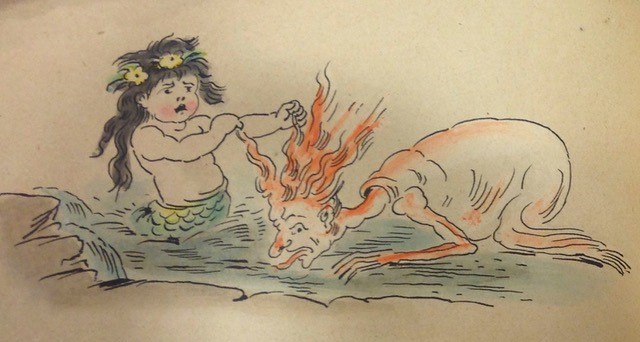 Public Domain
Public Domain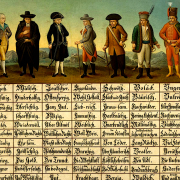 https://creativecommons.org/publicdomain/mark/1.0/
https://creativecommons.org/publicdomain/mark/1.0/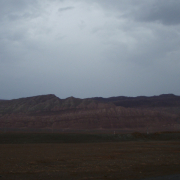 Eric Schluessel
Eric Schluessel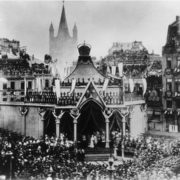
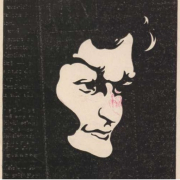 Public Domain
Public Domain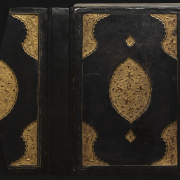 CC-BY-NC-SA 3.0
CC-BY-NC-SA 3.0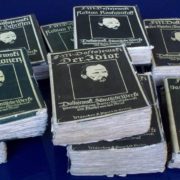
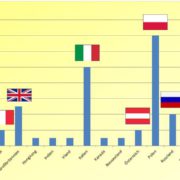
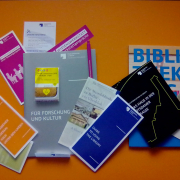 CC-BY-NC-SA
CC-BY-NC-SA

Ihr Kommentar
An Diskussion beteiligen?Hinterlassen Sie uns einen Kommentar!